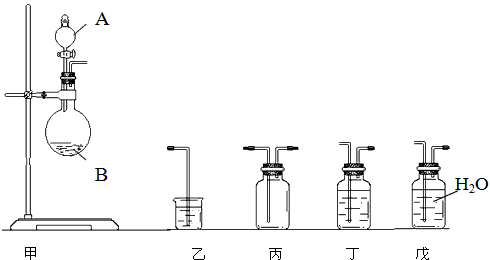问题
实验题
为了比较硫与碳的非金属性的强弱,某同学想通过比较两种元素的最高价氧化物对应的水化物的酸性强弱来证明硫与碳的非金属性的强弱,采用下图中的甲、乙装置进行探究,请你帮助他完成下列问题

(1)仪器A中应盛放的药品是___________,仪器B中应盛放的药品是______________,装置乙中应盛放的药品是________________。
(2)B中发生反应的离子方程式为:_______________________________;在装置乙中观察到的现象是:__________________________。
(3)该实验能证明硫与碳的非金属性的强弱的理论依据是: __________________________________。
答案
(1)稀H2SO4;Na2CO3(或可溶性碳酸盐);澄清石灰水
(2)CO32-+2H+==CO2↑+H2O;澄清石灰水变浑浊
(3)由H2SO4制H2CO3即由强酸制弱酸,S的最高价氧化物对应水化物的酸性强,故S的非金属性比C强
